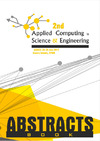Identificador persistente para citar o vincular este elemento:
https://accedacris.ulpgc.es/jspui/handle/10553/77638
| Título: | Mathematical model and control strategy for a Capacitive Deionization (CDI) System for water desalination, with a buck-boost bidirectional converter powered by photovoltaic solar cell, and a supercapacitor | Autores/as: | Ávila Rodríguez, Ventura Quintana Hernández, José Juan Mendieta Pino, Carlos Alberto León Zerpa, Federico Antonio Ramos Martín, Alejandro |
Clasificación UNESCO: | 3308 Ingeniería y tecnología del medio ambiente | Fecha de publicación: | 2017 | Editor/a: | ScienceKNOW Conferences | Conferencia: | 2nd Global Conference on Applied Computing in Science and Engineering (ACSE2) | Resumen: | In recent times, a great effort has been made in increasing the energy efficiency of the processes of obtaining water from human consumption, so a number of new technologies have emerged, such as the capacitive deionification (CDI), that is based on the use of materials of high porosity in the form of electrodes in capacitive cells to capture the ions of salts dissolved in the water to be treated. To achieve this, it must be used power converters that adapt to the operation needs of the CDI cells. In addition, intermidium energy storage systems have been used, such as supercapacitors that improve the operation of the system as a consequence of its characteristics [2]. The main objective of this article is to propose a mathematical state-space model and a control strategy for the system proposed in image 1, which is a capacitive deionization desalination system, which includes a buck-boost bidirectional power converter, a CDI cell, a photovoltaic cell, which will be responsible for powering the system in a more sustainable way, a supercapacitor like an energy storage element, with a high dynamic response. | URI: | https://accedacris.ulpgc.es/handle/10553/77638 | ISBN: | 978-84-697-4340-9 | Fuente: | 2nd Global Conference on Applied Computing in Science and Engineering (ACSE2), p. 53 |
| Colección: | Actas de congresos |
Visitas
115
actualizado el 26-oct-2024
Descargas
47
actualizado el 26-oct-2024
Google ScholarTM
Verifica
Altmetric
Comparte
Exporta metadatos
Los elementos en ULPGC accedaCRIS están protegidos por derechos de autor con todos los derechos reservados, a menos que se indique lo contrario.
